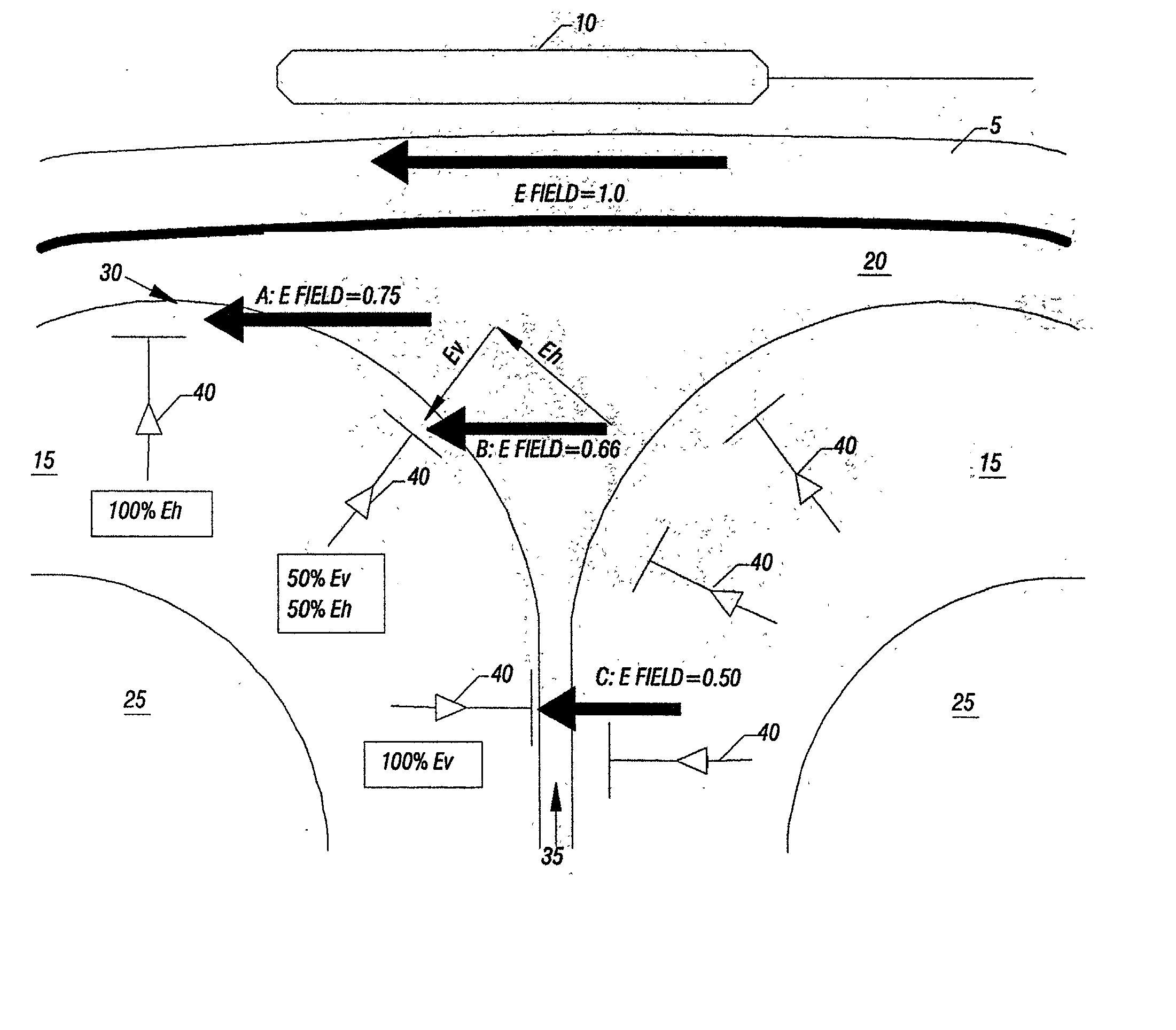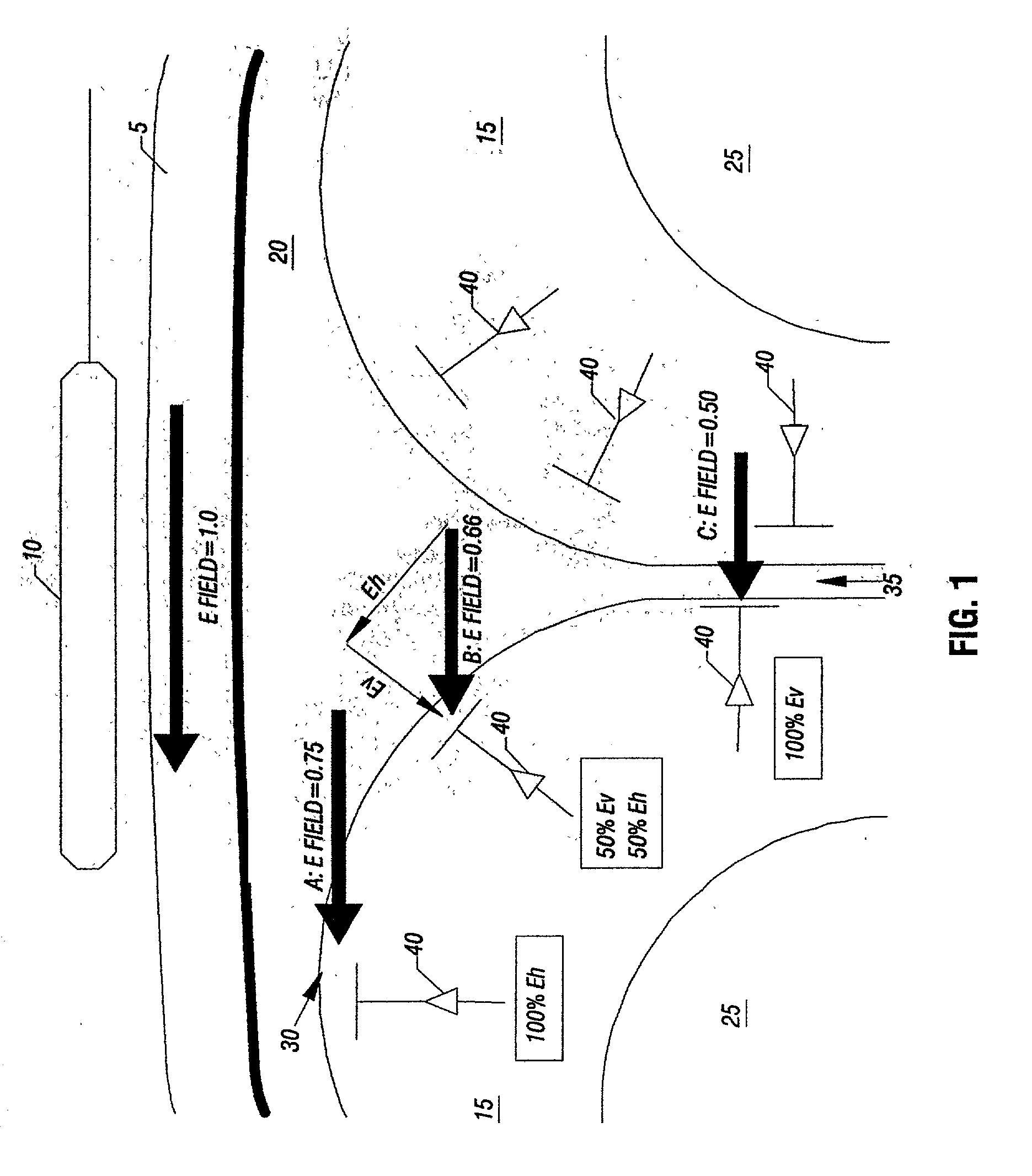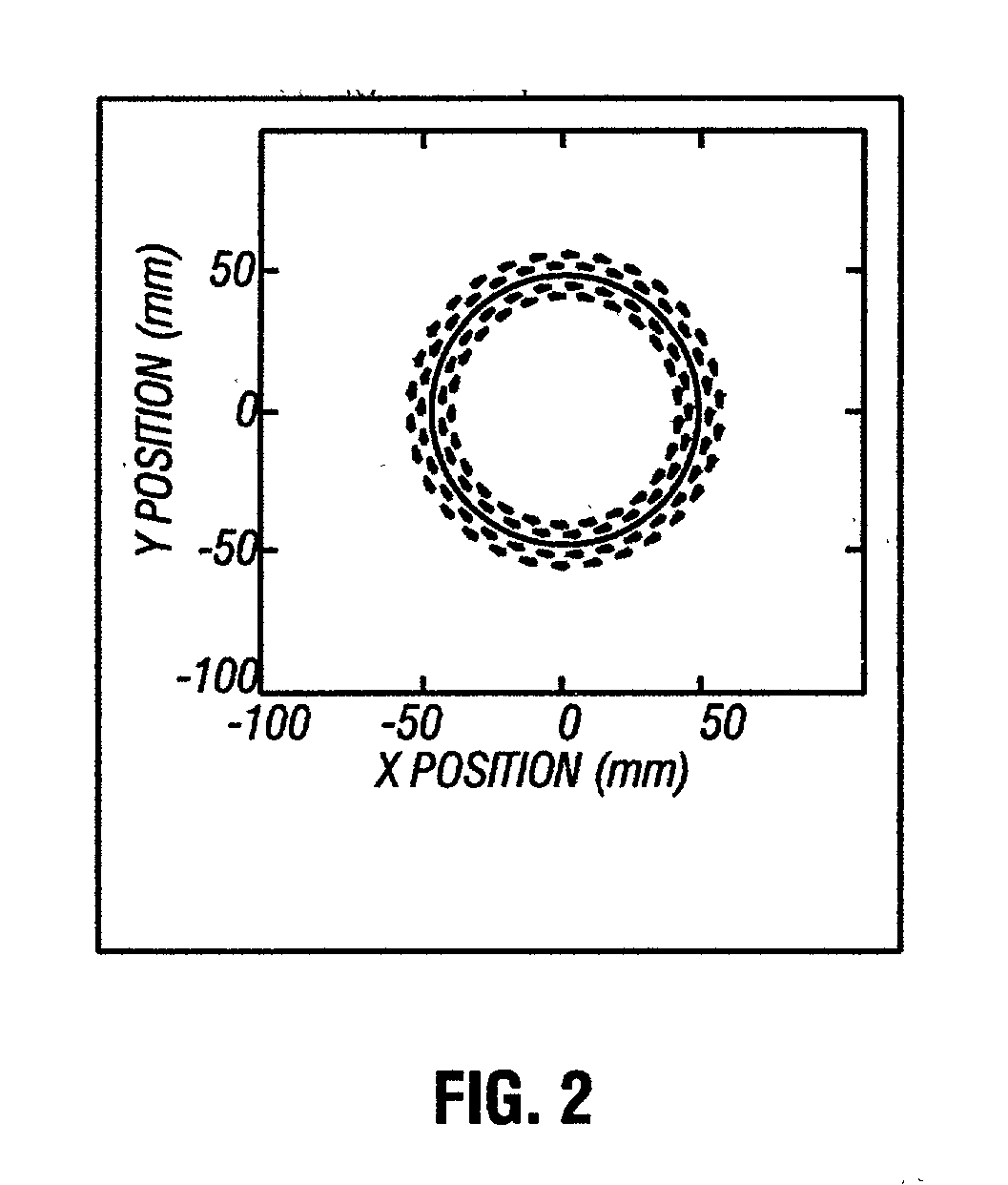Apparatus and methods for delivery of transcranial magnetic stimulation
- Summary
- Abstract
- Description
- Claims
- Application Information
AI Technical Summary
Problems solved by technology
Method used
Image
Examples
experiment 1
[0075] By Principle 3, maintaining the E-field at a field orientation but varying the strength of the field should vary the degree of TMS-induced neuronal activity. Eight normal volunteers were imaged by PET while undergoing 3-Hz TMS stimulations across a range of intensities. Stimulation was applied to the Supplementary Motor Area on the medial surface of the right frontal lobe of the cerebral hemisphere. The E-field was oriented perpendicular to the cortical surface, which was also perpendicular to the mid-sagittal plane and exactly 90.degree. rotated from the orientation required by the "B-nose" principle, described above. This stimulation produced strong activation on the medial-bank cortical surface at the location in which the E-field was most perpendicular to the cortical surface, as predicted by Principles 2 and 3. Response magnitude was highly correlated with TMS E-field strength, as predicted by Principle 3.
[0076] Experiment 2: By Principles 2 and 3, varying the orientati...
PUM
 Login to View More
Login to View More Abstract
Description
Claims
Application Information
 Login to View More
Login to View More - R&D Engineer
- R&D Manager
- IP Professional
- Industry Leading Data Capabilities
- Powerful AI technology
- Patent DNA Extraction
Browse by: Latest US Patents, China's latest patents, Technical Efficacy Thesaurus, Application Domain, Technology Topic, Popular Technical Reports.
© 2024 PatSnap. All rights reserved.Legal|Privacy policy|Modern Slavery Act Transparency Statement|Sitemap|About US| Contact US: help@patsnap.com










